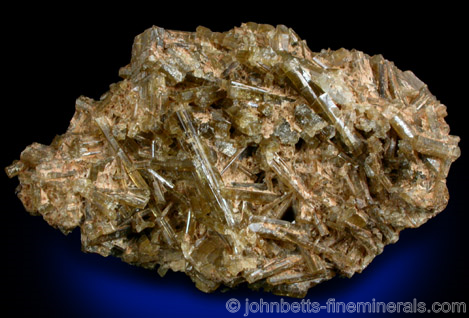The Mineral zoisite

Zoisite owes much of its popularity to a beautiful blue variety that was first discovered in 1967. This new discovery in Tanzania brought forth a previously unknown color and habit for this mineral. The variety was unofficially named Tanzanite after the county it was found in, and it became an ever-popular gemstone sensation shortly after its discovery. The color of Tanzanite is rarely natural; it is almost heat treated from grayish or brownish hued stones. The heat treatment process removes unwanted color tints and strengthens the desirable blue.
Zoisite occurs in many other colors, and another well-known form is the pink, manganese-rich variety called Thulite. Another interesting variety is the deep green massive form associated with contrasting red Ruby. Zoisite was named in 1805 after Austrian scientist and naturalist Baron Sigmund Zois von Edelstein (1747-1819), who had a notable mineral collection and identified Zoisite as being a unique mineral species.
Chemical Formula
Ca2Al3(SiO4)3(OH)
Color
Gray, beige, yellow, brown, green, blue, purple, pink, red. Transparent forms are strongly pleochroic.
Crystal System
Orthorhombic
Varieties
-
Mixture of opaque red Ruby in a green Zoisite matrix from Tanzania. Ruby
Zoisite has pretty contrast and is used as a minor gemstone.
-
Blue to purplish-blue variety of Zoisite found in the Merelani Hills in the Arusha region of Tanzania. Tanzanite is used as an important gemstone and has become enormously popular. See the gemstone Tanzanite for additional information.
-
Pink, manganese-rich variety of the Zoisite. Originally found in Norway, Thulite is named after the mythical region of Thule, which many identify as Norway. See the gemstone Thulite for additional information, and see also Clinothulite.
Uses
The more common forms of Zoisite are not of any significant interest, although transparent crystals, especially those rare forms from Pakistan, are highly valued among mineral collectors. The variety Tanzanite has become an extremely popular mineral and gemstone, and is heavily marketed by the jewelry industry. Fine Tanzanite gemstones can be extremely costly and cherished. The pink variety, Thulite, is used as a minor gemstone, and is most often cut as cabochons. The green variety associated with Ruby is also used as a minor gemstone.
Also see the dedicated gemstone pages for Zoisite, Tanzanite, and Thulite.
Noteworthy Localities
The variety Tanzanite is famous from the Merelani Hills in the Arusha region, Tanzania, where it is found in outstanding transparent gem forms. Tanzania is also the producer of massive green Zoisite associate with opaque Ruby at Longido, near Mount Kilimanjaro. A light purple gemmy Zoisite form came from an extremely limited occurrence in Laghman Province, Afghanistan; and outstanding transparent green, gray, colorless, and brown crystals from Alchuri in the Shigar Valley, Skardu, Pakistan. A classic old-time European occurrence is the Ziller Tal, in Tyrol, Austria. The pink Thulite variety is famous from Norway at Tvedestrand and Leksvik in Sorlandet, Aust-Auger.
There are only a handful of good Zoisite localities in the U.S. Pink Thulite, as well as other color forms come from the Spruce Pine District (especially Micaville), Mitchell Co., North Carolina. A massive and crudely crystallized gray and tan Zoisite comes from Conway, Franklin Co., Massachusetts; and yellowish-bronze interconnected crystals from the Nightingale District, Pershing Co., Nevada. Brown and green Zoisite crystals were known from the ores at Ducktown, Polk Co., Tennessee.
Distingushing Similar Minerals
Spodumene - Different crystal form, crystals often flattened, exhibits cleavage in both directions, whereas Zoisite only has cleavage in one direction.
Tourmaline - Harder (7 - 7.5), has poor cleavage.
Wollastonite - Softer (4.5 - 5), usually fluorescent.
Tremolite - Exhibits cleavage in both directions, whereas Zoisite only has cleavage in one direction, usually fluorescent.
The variety Tanzanite can resemble Cordierite, and the variety Thulite can resemble Rhodonite and pink Clinozoisite (Clinothulite).